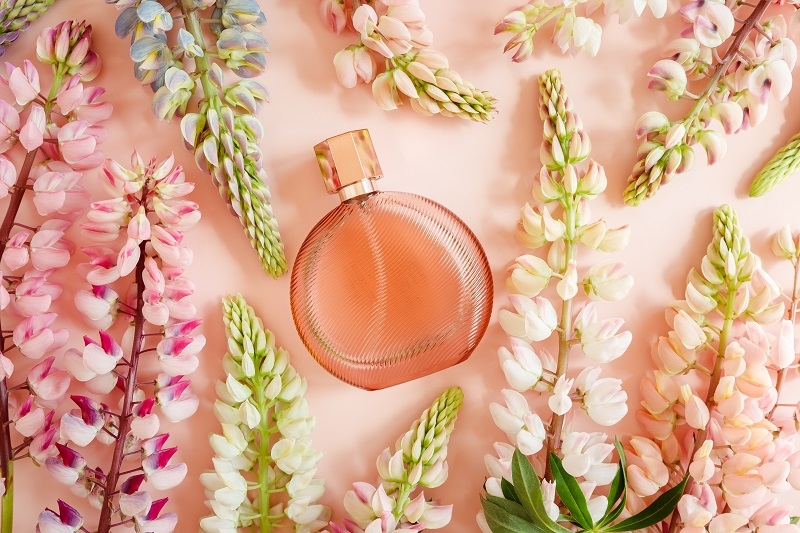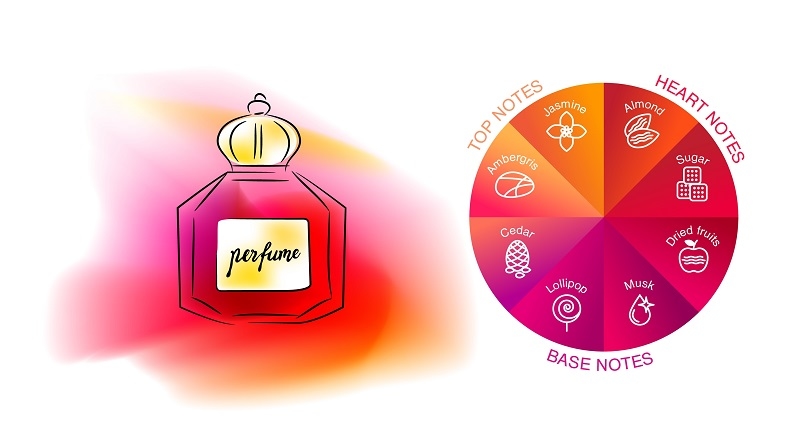
Flower smells always draw us in. They can feel new, sweet, soft, or strong based on the flowers used and how they are mixed. If you want a light scent for every day or a bold one for big days, picking the right flower smell can be hard with all the choices.
This floral perfume guide will help you dig into different flower notes, get how they mix, and find the one that fits who you are and how you dress.
Flower smells focus on the scent of blooms. Some have just one flower in the lead, while others mix many to add layers and depth. These smells often bring out feelings—love, grace, life, or ease. The blooms can smell fresh and green, dusty and soft, or rich and full.
When looking for a flower smell, think about the feel you want. Do you want to feel happy and light in the day, or deep and warm at night? Knowing what you like helps pick your flower smell easier.
In the world of smells, a single-note one sticks to one flower’s scent. Like, a smell just about rose or jasmine lets that flower stand out alone. These are great if you really love one kind of bloom.
Mixed flower scents combine different kinds of flowers and may include fruits, woods, or spices. These can create a scent that will evolve over time, revealing additional layers of aroma to experience as it settles on your skin. If you prefer a scent with more variation and depth, mixed scents might be the best option for you.
There are many ways to group flowers by their smell. Some well-known flower notes are:
Think spring blooms like peony, lily of the valley, or freesia. They smell clean, light, and a bit sweet.
Often with fruit or sugar notes, blooms like gardenia or magnolia bring a rich sweetness.
Iris, violet, and some roses fit here, giving a soft and comfy smell.
Fresh cut stems, leaves, and grass with blooms like hyacinth or narcissus for a sharp, real scent.
Deep, strong scents from blooms like tuberose, ylang-ylang, or jasmine are great for night wear.
Knowing these groups helps you pick the flower smell that suits your mood and place.
Roses are often the star flowers in smells. Its scent can go from fresh and light to deep and rich. The best rose perfumes use different types and ways to pull out special traits. Some roses smell bright and fresh, others dark and spicy.
Rose works well with many other notes—citrus for lightness, woods for depth, or spices for warmth. A fresh rose scent might be just right for day, while a deep, rich rose feels bold and fancy for nights out.
Jasmine is a loved part in smells, often seen as warm, far-off, and deep. It can be airy and light with citrus or strong and full with amber or musk. Here are a few jasmine-smelling tips to think about:
Jasmine is a versatile flower and works equally well in warm or cool weather, so it's a good candidate for your smell set!
Just like clothing, scents become seasonal. Best to go with lighter, fresh flowers in the spring and summer and then to deep, rich florals in the fall and winter.
Picking flowers to match the season makes your scent blend well with the air around you.
When trying out perfumes, don't just smell the cap. Spray it on a strip, then on your skin. Your skin can change how it smells. Let it sit. Most scents take hours to show all their notes from start to end.
When testing, try only three at once. Drink water and go outside for a bit to clear your nose.
Perfume says a lot about you. Picking the right flower can show your style:
Think about how you want to be seen, and it can guide your choice.
Mixing scents is a fun way to make something unique. Add a citrus note to a floral for freshness, or a woody note for a classy touch. Seek equilibrium--combine light floral scents with clean notes, and rich scents with warmth.
When you have a rose scent, pair it with a vanilla or something similar for a cozier feeling. If you have jasmine, try pairing it with coconut or sandalwood to be rich.

Besides rose and jasmine, check out these popular floral fragrance notes:
Trying new flowers might just find you a new favorite.
Keep perfumes cool, dark, and dry to keep them fresh. Sunlight or heat can hurt them. Store them in their boxes or a drawer.
Don’t shake your perfume; it can let air in and change the scent faster.
Even with suggestions, mistakes happen. Avoid:
Take your time and go with your gut when picking.
Just like clothes, it's great to have different perfumes for different times.
This way, you’ll always have the perfect scent.
Floral scent selection works for anyone and in any situation as follows:
Matching your scent to the time can uplift your mood and delight others.
Once you pick your top flower smell, you'll want that smell to hang around all day:
Floral fragrances are more than a beautiful smell; they tell your story and influence your mood. With this floral perfume guide, you'll learn about a variety of floral notes, what each one conveys, and be equipped to make the best selection for you.
If you love rose smells, want to know more about jasmine, or like other flower smells, the world of flower smells is vast! Take it slow, try many flowers, and enjoy the path of finding the flower smell that is just right for you!
This content was created by AI